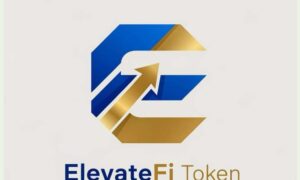Introduction: The Power of Making It Simple
In fintech, “feature-rich” is often a euphemism for “hard to use.” Most platforms brag about complexity, offering dozens of tabs, widgets, and settings—but they rarely stop to ask: is this actually helpful?
Sabeer Nelli, the founder of Zil Money and OnlineCheckWriter.com, has taken the opposite route. His product philosophy is radical in its restraint: you should be able to pay a vendor, print a check, or send a wire in two clicks or less.
It’s a mindset born not from design theory, but from hands-on business pain—he built Zil Money as a former operator, not a former investor. The result is a platform trusted by over a million users that hides its complexity under a layer of calm, clean utility.
Design That Starts With Reality
Sabeer Nelli didn’t start by imagining what features a fintech platform could offer. He started by asking: what do small business owners actually need to do—right now, under pressure, with limited time?
- A vendor calls and needs a check immediately
- Payroll has to run before 5PM today
- A contractor overseas is waiting for a wire
- A client refund is overdue, and it’s damaging trust
In every one of these moments, complexity is the enemy. Business owners aren’t looking for charts or dashboards. They want to get something done—and get on with their day.
That’s the standard Zil Money holds itself to: make essential tasks effortless, no matter how complex the backend.
“Two Clicks or Less”: A Product Rule That Sticks
Inside Zil Money, the idea of “two clicks or less” isn’t just an aspiration. It’s a design rule. Whether users are printing checks, initiating ACH transfers, or setting up recurring payments, the action should take moments—not minutes.
And critically, users don’t need to learn new jargon or processes. The platform adapts to the user—not the other way around.
Want to pay a vendor by check?
- Click “Payee”
- Click “Print Check”
Done.
Need to send a wire?
- Select recipient
- Choose “Wire Transfer”
Done.
And if users want to automate a weekly payroll run, that’s also built in—without extra setup, fees, or support tickets.
Zil Money’s simplicity isn’t surface-level. It’s deeply embedded in how the platform is architected.
Simplicity That Doesn’t Sacrifice Power
A common misconception: if it’s easy, it can’t be powerful. Zil Money proves otherwise.
Behind that clean interface is a deeply robust infrastructure:
- Real-time account sync via US
- Multi-layer user roles and approval workflows
- Full audit trails for every action
- Cross-border payment capabilities in 180+ countries
- Compliance with SOC 2, PCI DSS, and other financial standards
None of this is visible until you need it. And that’s the point.
Nelli’s philosophy: expose power contextually, not constantly. Show the user exactly what they need—no more, no less.
Lessons From a Founder Who Still Uses the Product
One reason Zil Money stays simple? Sabeer Nelli still uses it himself.
He’s not detached from the end-user experience. He’s embedded in it—running multiple companies, managing payments, and paying his own vendors through the same system.
When support tickets surface a recurring friction point, he notices. When business owners ask for a shortcut or express confusion, he listens. And when a new feature adds complexity without clear benefit, it gets cut.
This ongoing loop—founder as user, user as co-creator—is rare in today’s scale-obsessed fintech landscape. But it’s what keeps Zil Money intuitive.
Real Businesses, Real Wins
Zil Money’s simplicity isn’t just appreciated—it’s operationally transformative.
- A freelance design firm uses the platform to run payroll and vendor checks every Friday—without a dedicated finance person.
- A cleaning service chain prints and mails checks from their HQ with two clicks, saving hours each week.
- A nonprofit switches between ACH and international wires depending on funding cycles, all from the same interface.
These aren’t huge companies with IT teams and finance departments. They’re small teams, real operators, and everyday users who now spend less time on finance—and more time building.
Why Most Platforms Get This Wrong
Fintech companies love to show off complex dashboards. The more toggles, analytics, and KPIs, the better—at least on paper.
But for most businesses, financial decisions aren’t made in a boardroom. They’re made:
- From the front seat of a truck
- In between customer calls
- During lunch breaks
- Late at night after the kids are asleep
In those moments, users don’t want options. They want clarity.
Sabeer Nelli recognized that early—and it’s why Zil Money users rarely need tutorials or customer support to get started. The platform is built for how people actually work, not how product managers imagine they should.
Simplicity = Retention
One of the most overlooked benefits of simplicity? It keeps people coming back.
- Less confusion means fewer mistakes
- Fewer steps mean faster execution
- Faster outcomes mean higher trust
Zil Money’s retention is fueled not by contracts or loyalty programs—but by the fact that users don’t dread logging in. The platform feels like a help, not a task.
And in an age where most tools get abandoned after the first login, that’s a real edge.
Final Word: Simple Is Strategic
In an industry obsessed with what’s possible, Sabeer Nelli is focused on what’s useful. His “two clicks or less” philosophy isn’t just a UX goal—it’s a product design worldview.
Zil Money may support complex operations like global payments, payroll, and check printing—but it never makes users feel that complexity.
For entrepreneurs, that means one less learning curve. One less support ticket. One less delay.
And over time, it adds up—not just to a better experience, but to a faster, smarter business.



































